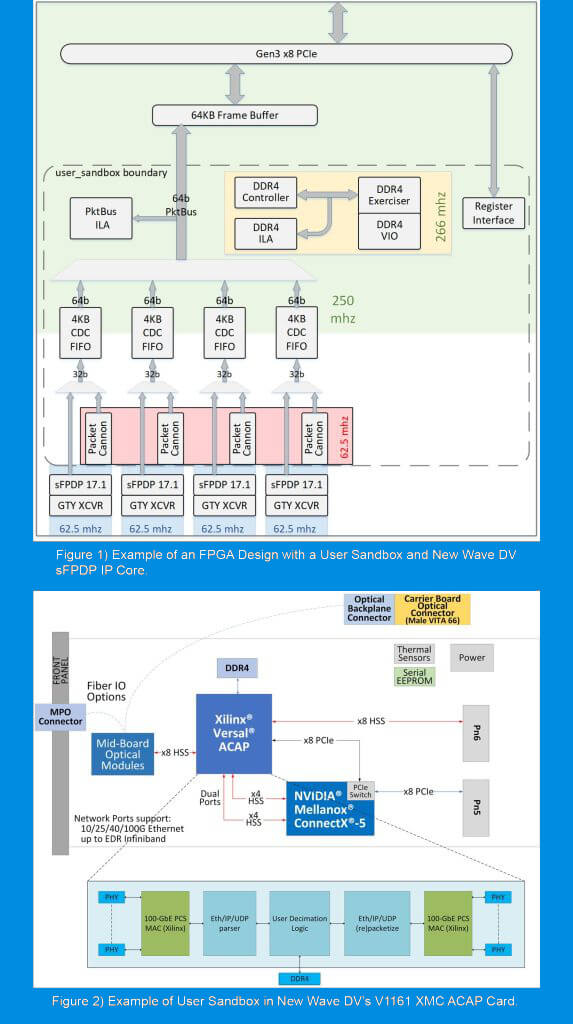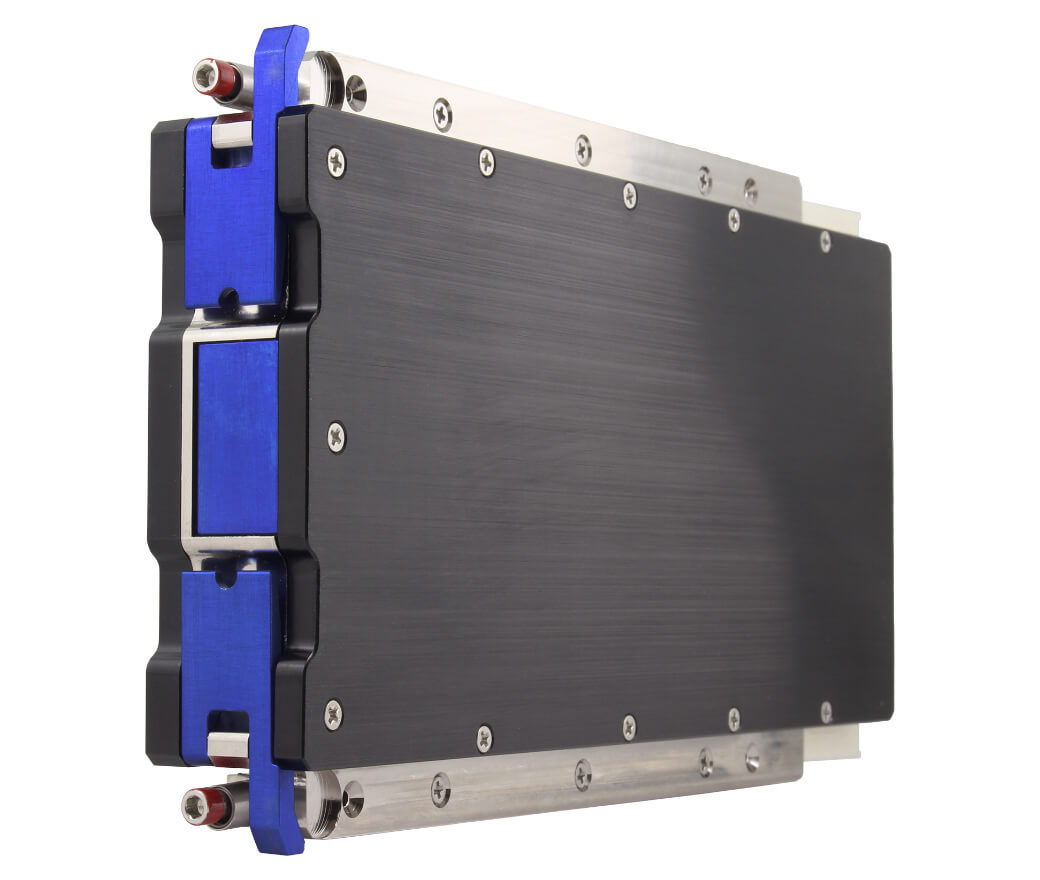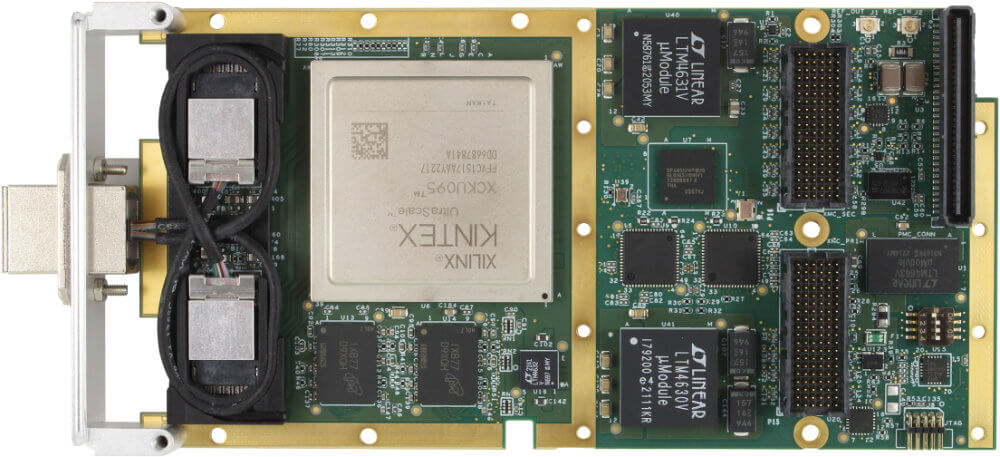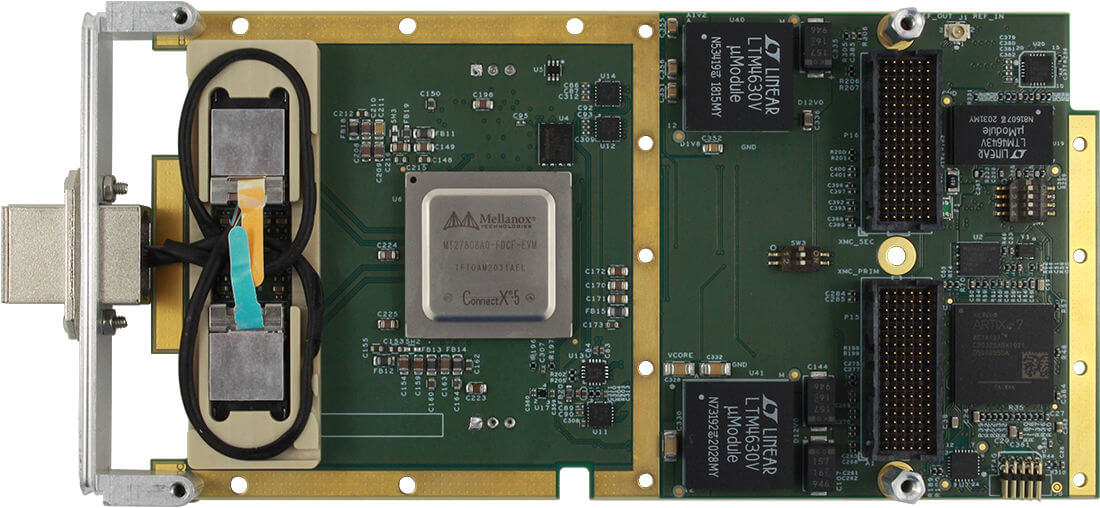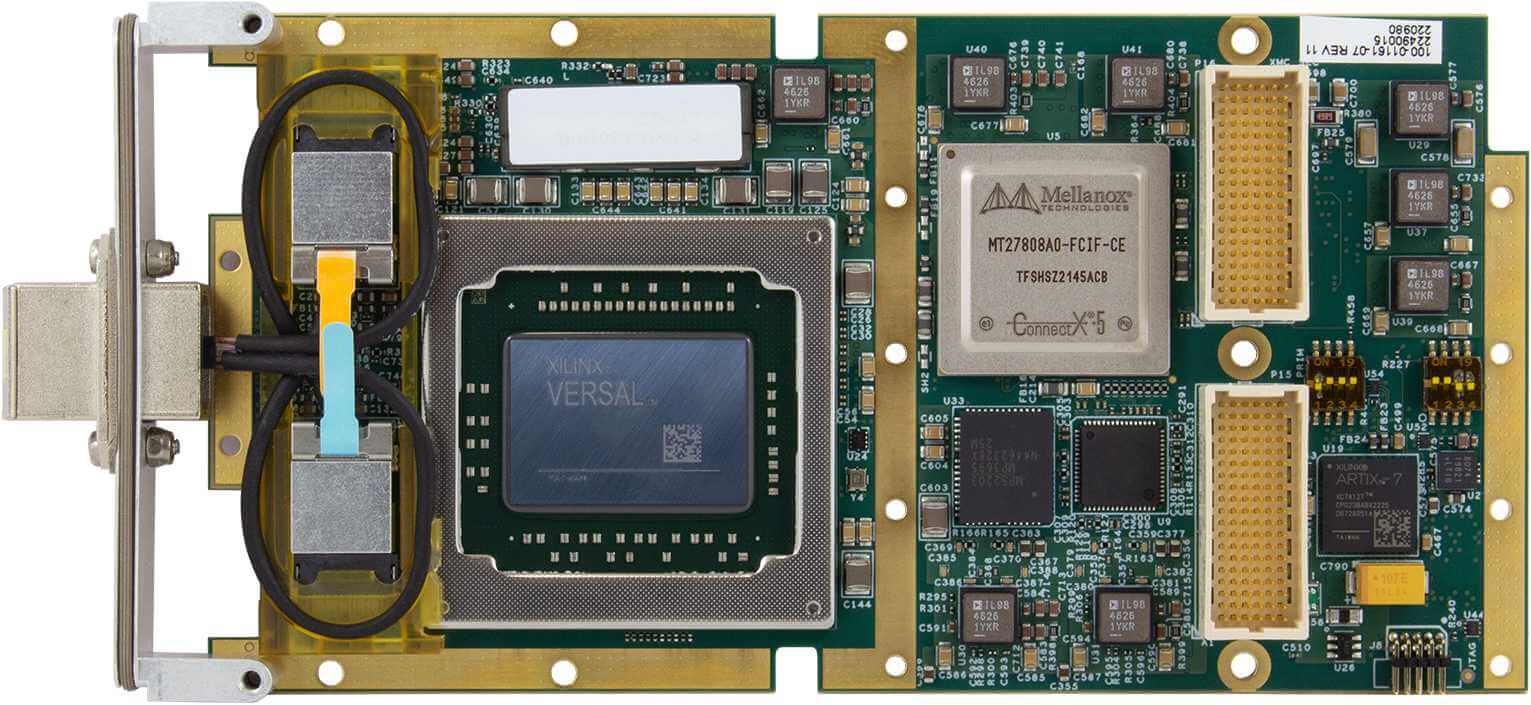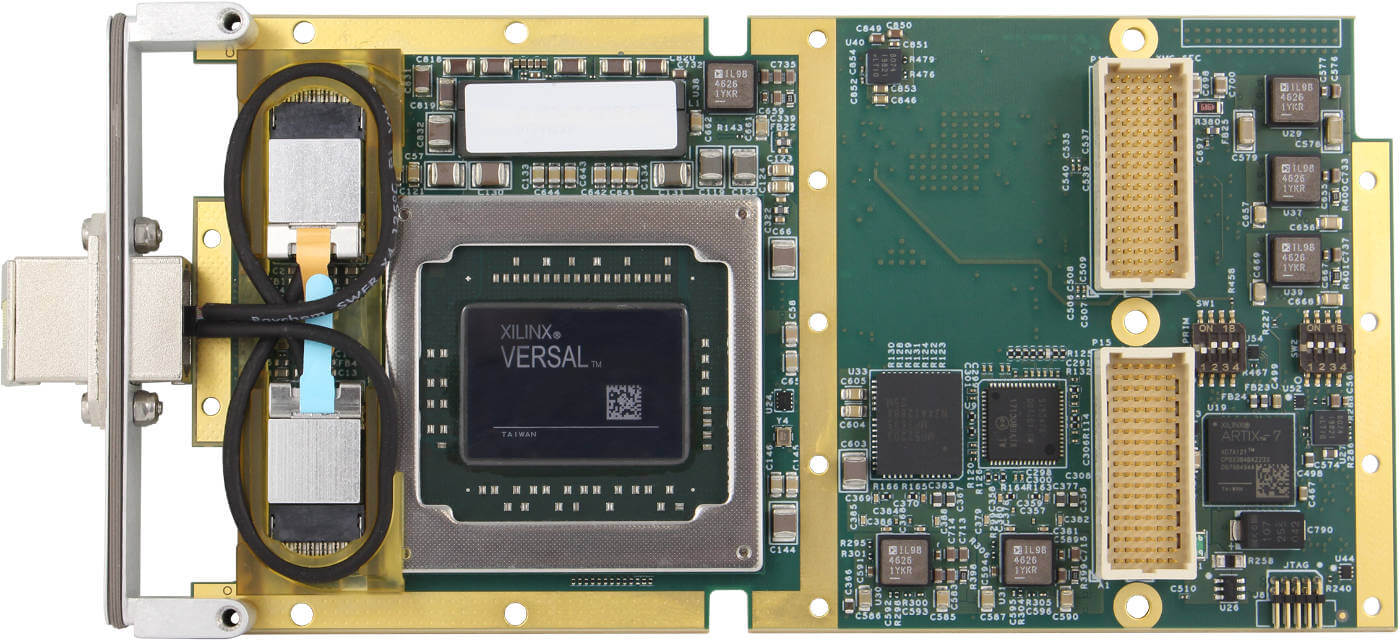Embedded Radar Processing Hardware
Our embedded radar interface cards are purpose-built for extreme environments, high-bandwidth networking, and interface applications. The V1153, V1160, V1161 XMC cards and V6061 & V6063 3U VPX modules will withstand harsh environments while staying within your SWaP and budget requirements. Supporting temperature ranges from -40°C to +85°C and complying with VITA 20 standards, each XMC card delivers a reliable, long-lasting solution for your rugged embedded needs.
New Wave Design also offers cards suitable for test and measurement applications. The V1151 & V1152 XMC cards, and V5051 & V5052 PCIe cards offer the same hardware based protocol engine implementations as the embedded cards, with cost effective commercial optics replacing the rugged optics of the embedded families. The near perfect determinism of hardware based protocol engines make these cards ideally suited to test and measurement applications requiring repeatability.
Protocol support for digital radar systems includes Serial Front Panel Data Port (sFPDP), Fibre Channel Remote Direct Memory Access (FC-AE-RDMA), and 10/25/40/50/100G Ethernet/RoCEv2.
The sFPDP protocol offers a high-speed, low-overhead, point-to-point communication protocol commonly used in data intensive processing applications. The FC-RDMA core provides a complete layer 4 hardware IP solution for the FC–AE-RDMA protocol. The core provides full FC compliance, hardware-based LUN mapping, and complete offload of RDMA frame handling. Ethernet/RoCEv2 is implemented using a Mellanox® ConnectX®-5 network interface device, offering industry leading performance and offload functionality.
New Wave Design also offers other Fibre Channel derivatives as COTS products, and would be interested in discussing new protocols as well.
